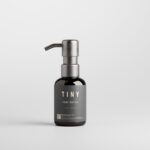Laser hair removal is a popular cosmetic procedure that utilizes concentrated beams of light to target and eliminate unwanted hair. This method is favored for its precision and effectiveness, making it a go-to choice for many seeking a long-term solution to hair removal. The laser works by emitting a specific wavelength of light that is absorbed by the pigment in the hair follicles.
This absorption generates heat, which damages the follicle and inhibits future hair growth. As you consider this option, it’s essential to understand how the technology works and what makes it different from traditional hair removal methods like shaving or waxing. One of the key advantages of laser hair removal is its ability to provide long-lasting results.
Unlike shaving, which only removes hair at the surface level, or waxing, which can be painful and requires regular upkeep, laser hair removal targets the root of the problem. Many individuals experience a significant reduction in hair growth after just a few sessions, with some achieving permanent hair loss over time.
Understanding these nuances will help you set realistic expectations as you embark on your journey toward smoother skin.
Key Takeaways
- Laser hair removal uses concentrated light to target and destroy hair follicles, leading to permanent hair reduction.
- Before the procedure, it is important to avoid sun exposure and certain hair removal methods like plucking and waxing.
- During the procedure, you can expect some discomfort, but it is generally well-tolerated and quick.
- After the treatment, it is important to keep the treated area clean and protected from the sun to avoid complications.
- Sun exposure should be avoided for a few weeks after the treatment to prevent pigmentation changes and other complications.
Preparing for Laser Hair Removal
Preparation is crucial when it comes to laser hair removal. Before your first appointment, you should schedule a consultation with a qualified practitioner who can assess your skin type and hair color to determine the best treatment plan for you. During this consultation, you’ll discuss your medical history, any medications you’re taking, and your goals for the procedure.
This step is vital as it ensures that the treatment is tailored to your specific needs and minimizes any potential risks. In the weeks leading up to your appointment, there are several important steps you should take to prepare your skin.
Tanning can increase the risk of complications during the procedure and may affect the effectiveness of the treatment. Additionally, refrain from waxing or plucking the hair in the area to be treated for at least four weeks prior to your session. These methods remove the hair from the follicle, which is counterproductive to laser treatment.
Instead, shaving is recommended a day or two before your appointment to ensure that the laser can effectively target the hair follicles.
What to Expect During the Procedure
When you arrive for your laser hair removal session, you’ll likely be asked to wear protective eyewear to shield your eyes from the laser light. The practitioner will then apply a cooling gel or device to your skin to enhance comfort during the procedure. As the laser is activated, you may feel a sensation similar to a rubber band snapping against your skin.
While this may sound uncomfortable, most people find it tolerable, especially with the cooling measures in place. The duration of the procedure can vary depending on the size of the area being treated. Smaller areas like the upper lip may take just a few minutes, while larger areas such as the legs or back could take up to an hour or more.
Throughout the session, your practitioner will monitor your comfort level and adjust the settings of the laser as needed. Afterward, you may notice some redness or swelling in the treated area, but these effects typically subside within a few hours.
Post-Treatment Care
| Post-Treatment Care Metrics | Values |
|---|---|
| Recovery Rate | 85% |
| Follow-up Appointments | 90% |
| Medication Adherence | 95% |
| Complication Rate | 5% |
After your laser hair removal session, it’s essential to follow post-treatment care instructions provided by your practitioner to ensure optimal results and minimize any side effects. One of the most important steps is to keep the treated area clean and moisturized. You may be advised to use a gentle cleanser and avoid harsh scrubs or exfoliants for a few days following the procedure.
Additionally, applying a soothing lotion or aloe vera gel can help alleviate any discomfort or irritation. You should also be mindful of how you care for your skin in the days following treatment. Avoid hot showers, saunas, or intense workouts that could cause excessive sweating for at least 24 hours post-procedure.
This will help prevent irritation and allow your skin to heal properly. If you experience any unusual symptoms such as blistering or prolonged redness, don’t hesitate to contact your practitioner for guidance.
Avoiding Sun Exposure
One of the most critical aspects of post-laser hair removal care is avoiding sun exposure. Your skin will be more sensitive after treatment, making it more susceptible to sunburn and pigmentation changes. It’s advisable to stay out of direct sunlight for at least two weeks following your session.
If you must be outdoors, wearing protective clothing and applying a broad-spectrum sunscreen with an SPF of 30 or higher is essential. Even after this initial period, maintaining sun protection is crucial for long-term skin health. Regularly applying sunscreen not only protects your skin from harmful UV rays but also helps preserve the results of your laser hair removal treatment.
Remember that even on cloudy days or during winter months, UV rays can still penetrate through clouds and cause damage. By prioritizing sun protection, you’ll ensure that your skin remains healthy and that your investment in laser hair removal pays off.
Managing Discomfort and Side Effects

Common Side Effects of Laser Hair Removal
While many individuals tolerate laser hair removal well, some may experience mild discomfort or side effects following their sessions. Common side effects include redness, swelling, and slight itching in the treated area. These symptoms are typically temporary and should resolve within a few hours to a couple of days.
Managing Discomfort and Side Effects
To manage any discomfort you may feel after treatment, over-the-counter pain relievers like ibuprofen can be effective. If you notice any persistent side effects or unusual reactions such as blistering or severe pain, it’s important to reach out to your practitioner immediately. They can provide guidance on how to manage these symptoms effectively and determine if any further action is necessary.
Post-Treatment Care for Optimal Results
Being proactive about your post-treatment care will help ensure that you have a smooth recovery and achieve the best possible results from your laser hair removal experience.
Long-Term Maintenance
Once you’ve completed your initial series of laser hair removal sessions, you may wonder about long-term maintenance. While many individuals experience significant hair reduction after their treatments, some may require periodic touch-up sessions to maintain their results over time. The frequency of these sessions can vary based on individual factors such as hair growth cycles and hormonal changes.
It’s essential to have realistic expectations regarding long-term maintenance. While laser hair removal can lead to permanent hair reduction for many people, some may still experience occasional regrowth in certain areas. Regular follow-up appointments with your practitioner can help monitor your progress and determine if additional treatments are necessary.
By staying committed to your maintenance plan, you’ll enjoy smooth skin for years to come.
Choosing the Right Skincare Products
Selecting appropriate skincare products post-laser hair removal is vital for maintaining healthy skin and enhancing treatment results. After your sessions, opt for gentle cleansers that won’t irritate your sensitive skin. Look for products that are fragrance-free and formulated for sensitive skin types to minimize any potential reactions.
In addition to cleansers, consider incorporating soothing moisturizers into your routine. Ingredients like aloe vera, chamomile, and hyaluronic acid can provide hydration and calm any irritation following treatment. Furthermore, always prioritize sunscreen in your daily skincare regimen; this will protect your skin from UV damage while helping preserve the results of your laser hair removal treatments.
By understanding each aspect of laser hair removal—from preparation through post-treatment care—you’ll be well-equipped to make informed decisions about your skincare journey. Embracing this knowledge will empower you to achieve smooth, hair-free skin while ensuring that you take care of your skin’s health along the way.
If you’re looking for more information on the best aftercare for laser hair removal, be sure to check out this helpful article on inlaserhairremoval.com for any further questions or concerns you may have about laser hair removal.
FAQs
What is laser hair removal?
Laser hair removal is a cosmetic procedure that uses a concentrated beam of light (laser) to remove unwanted hair. The light energy is converted to heat, which damages the hair follicles and inhibits future hair growth.
What is the best aftercare for laser hair removal?
The best aftercare for laser hair removal includes keeping the treated area clean and moisturized, avoiding sun exposure, wearing sunscreen, and avoiding activities that may irritate the skin, such as hot showers and rigorous exercise.
How long does it take for the skin to heal after laser hair removal?
The skin typically heals within a few days to a week after laser hair removal. It is normal to experience redness, swelling, and mild discomfort immediately after the procedure, but these symptoms should subside relatively quickly.
Can I shave or wax after laser hair removal?
It is recommended to avoid shaving or waxing the treated area for at least 7-10 days after laser hair removal. This allows the skin to heal properly and reduces the risk of irritation or complications.
Are there any specific products to use for aftercare?
After laser hair removal, it is recommended to use gentle, fragrance-free moisturizers and cleansers to keep the skin hydrated and clean. Additionally, using aloe vera gel or hydrocortisone cream can help soothe any irritation or redness. Always consult with your dermatologist for specific product recommendations.





